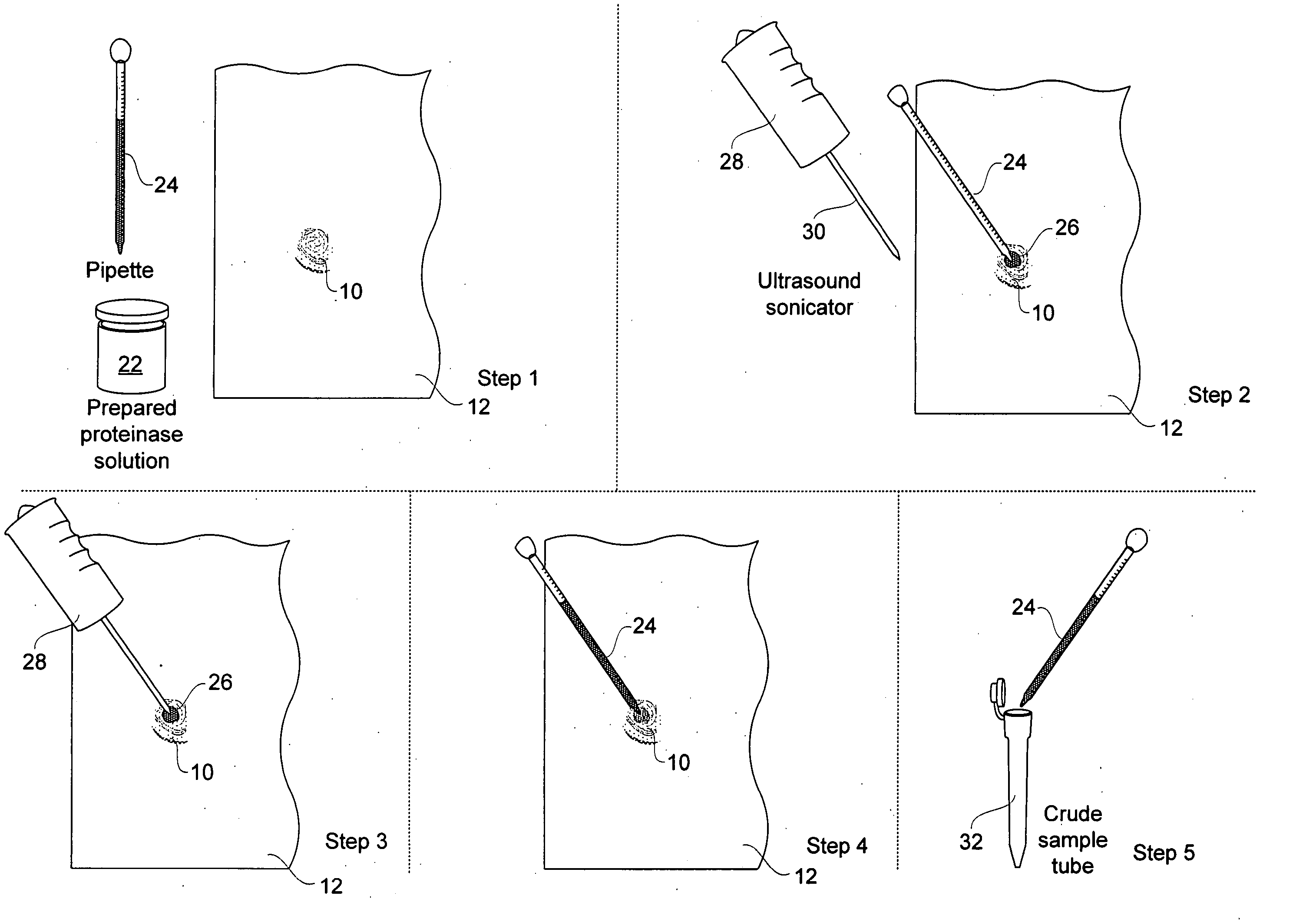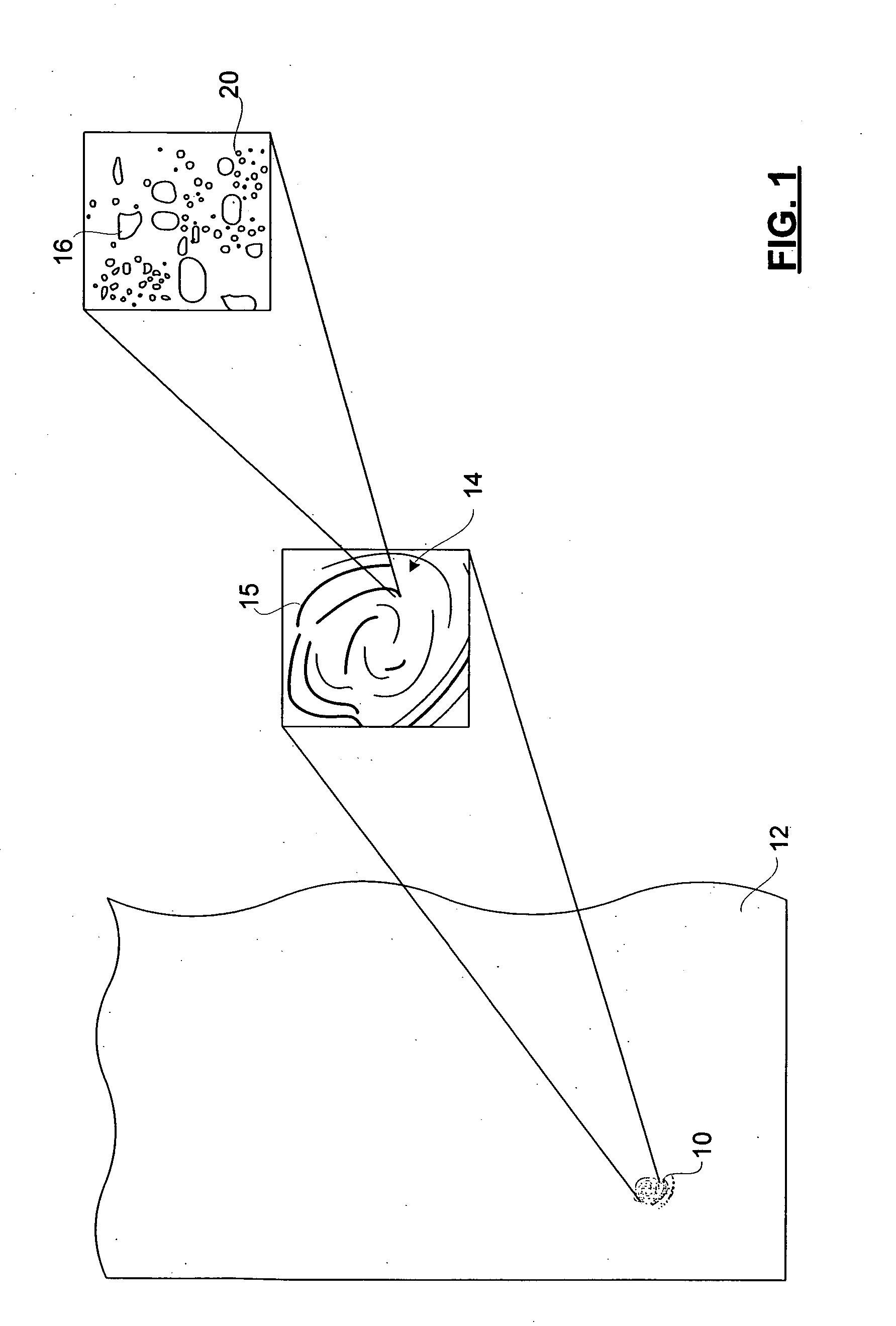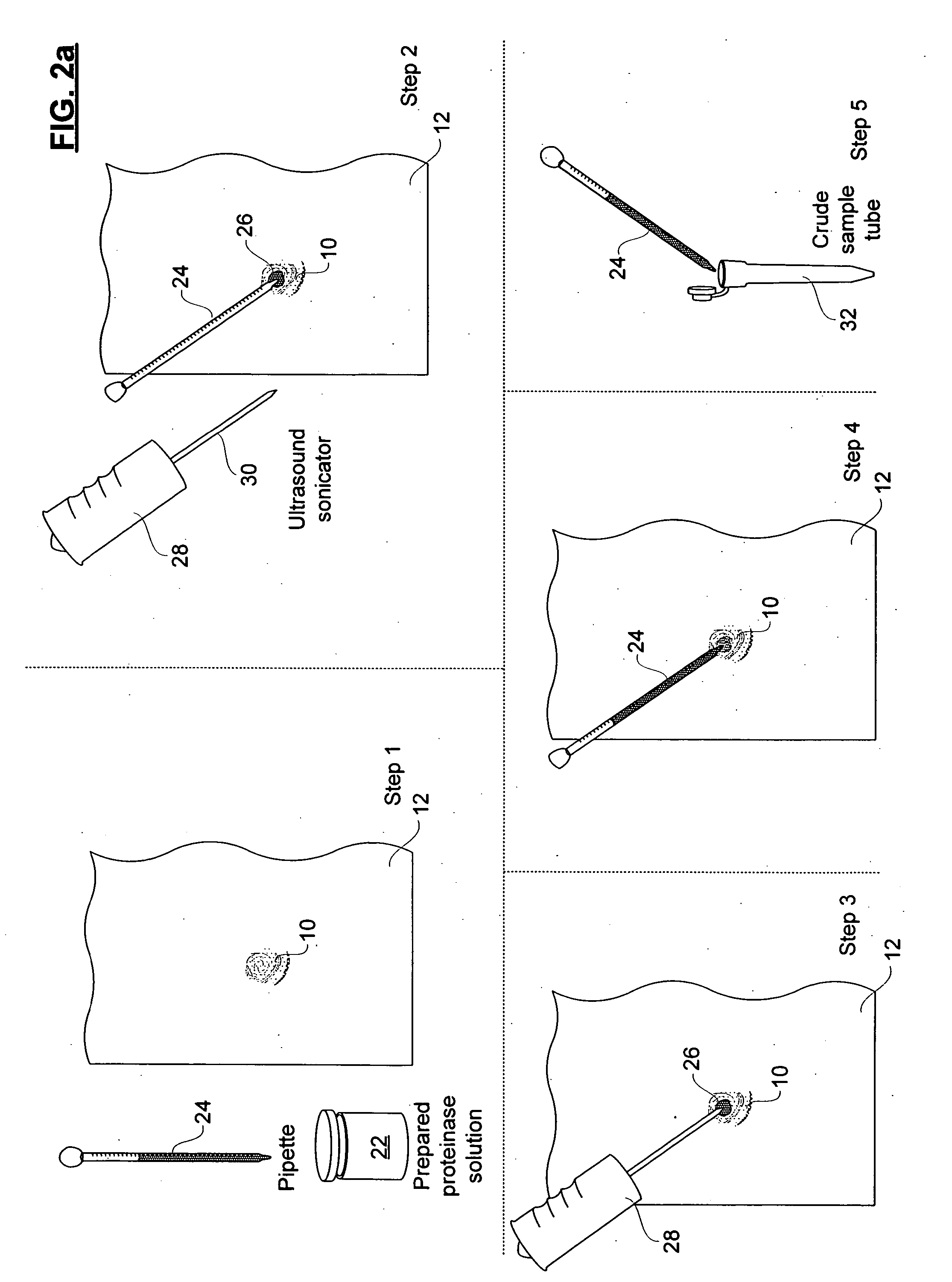Method and apparatus for collecting cells for macromolecular analysis
a macromolecular analysis and cell technology, applied in biochemistry apparatus and processes, component separation, withdrawal sample devices, etc., can solve the problems of invasive methods for obtaining and extracting dna, risk of disease transmission, and discomfort associated with blood and other invasive methods of collection, so as to facilitate macromolecular analysis, collect cells quickly and efficiently, and promote cell detachment
- Summary
- Abstract
- Description
- Claims
- Application Information
AI Technical Summary
Benefits of technology
Problems solved by technology
Method used
Image
Examples
examples
[0038] In order to verify the cell collection technique, and to determine compatibility with the identified DNA extraction methods, four sets of experiments were conducted.
experiment 1
Cell Removal
[0039] The purpose of this experiment was to collect fingerprint samples left on a surface using the method for collection in accordance with the invention.
[0040] In forensic science, fingerprints are generally collected using either a swabbing method (Van Oorchot RA, Jones MK. DNA fingerprinting from fingerprints. Nature 1997; 378(6635): 767.) or an adhesive tape method (Zamir A, Springer E, Glattsten B. Fingerprints and DNA: STR typing of DNA extracted from adhesive tape after processing for fingerprints. Journal of Forensic Sciences 2000, 45(3): 687-68; U.S. Pat. No. 6,355,439).
[0041] As described above, the sampling technique in accordance with the invention collects debris from a fingerprint left on a surface that can support a fluid droplet by applying ultrasonic energy directly to the droplet applied to an area with the fingerprint. The media of ultrasonic energy transfer can be water, a buffer, or an enzyme solution, however to expedite subsequent steps of DNA ...
experiment 2
and Extraction From Fingerprints Left on Two Different Surface Types
[0043] The purpose of these experiments was to compare the yield of DNA extracted from fingerprints left on two different common fingerprint-bearing surfaces (glass and plastic).
[0044] As illustrated in Table 1, the procedure was able to extract DNA from fingerprint samples collected on different surfaces. In these experiments two different surface types were used: polystyrene and glass. 12 volunteers participated in these experiments. Four fingerprints were collected from each volunteer. Two fingerprints from each volunteer were collected on glass surfaces, and two fingerprint samples were collected on plastic surfaces. 48 fingerprint samples were collected in total from the volunteers.
[0045] DNA was collected and extracted from all fingerprint samples using invented sampling and extraction techniques. DNA quantification (yield of DNA) was performed using a standard QuantiBlot Human Quantification Kit purchased f...
PUM
| Property | Measurement | Unit |
|---|---|---|
| time | aaaaa | aaaaa |
| frequency | aaaaa | aaaaa |
| frequency | aaaaa | aaaaa |
Abstract
Description
Claims
Application Information
 Login to View More
Login to View More - R&D
- Intellectual Property
- Life Sciences
- Materials
- Tech Scout
- Unparalleled Data Quality
- Higher Quality Content
- 60% Fewer Hallucinations
Browse by: Latest US Patents, China's latest patents, Technical Efficacy Thesaurus, Application Domain, Technology Topic, Popular Technical Reports.
© 2025 PatSnap. All rights reserved.Legal|Privacy policy|Modern Slavery Act Transparency Statement|Sitemap|About US| Contact US: help@patsnap.com



